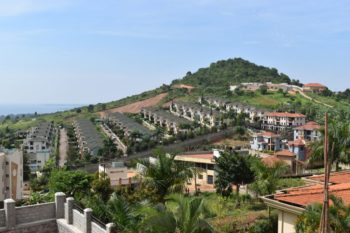If you wanted to make it easier for low-income women to build careers, how would you find out what would help?hj
If you wanted to make it easier for food banks to track, manage, ask for, and share donations, where would you start?
If you know that your ancient city centre is struggling to balance car and van traffic with bicyclists and pedestrians on streets built for horses, who would you talk to?
The answer to all these questions should be obvious – talk to the people involved. Ask the low-income women, the people who run food banks, the bicyclists who come and go in the city centre. Talk to the career coaches, the employers, the local charities, the local businesses. Find out who is trying to help, and what’s not working.
Too often, this step is overlooked. It’s hard work! You have to find and talk to people you don’t know, and you might hear things you don’t want to hear. It’s easier to make assumptions and shortcut processes. But then solutions end up serving the needs of the companies or funders behind them rather than the people most affected.
Co-designing solutions
When we set out to solve societal problems at Challenge Works, we work with cities, end users, and beneficiaries to design challenges and foster meaningful problem solving. We try to engage from start to finish, from identifying the problem to testing the solutions. Some call it co-design and co-creation. In innovation circles, these terms are often used interchangeably, sometimes substituted with user-centred design, human-centred design, participatory design, and similar concepts.
In particular, we want to highlight two areas of action for city governments in conducting co-design and co-creation within challenges. Here is how we think about co-creation, particularly when designing and delivering challenges with cities and the people who live in them:
First, choose problems that are real issues for community residents and businesses, especially people who are often left out of local government processes.
The first steps we take when designing a new challenge are to identify the problem to be solved and who is most affected by it. None of this is worth doing if we can’t create solutions that actually meet the needs of the people involved. At best, you’re wasting time and money developing solutions that don’t get used, and the problem remains unsolved. At worst, solutions end up being counterproductive or creating more problems.
We break this process down by exploring the beneficiaries (the people whose lives will improve because of the innovations that will be created or scaled); the end users (who directly engage with the innovations that get created); and the customers (the people or organisations that pay for the innovations).
Sometimes, two or three of these may overlap. Maybe the customer is a city resident who purchases the product, uses it, and directly benefits from it. But not always! Challenges run in partnership with cities to create social benefit are usually more complex.
The solution might be a service that the government purchases with public funds, and the service is free at the point of use to the city resident, or heavily subsidised. It might be a service that is procured by the local government to make it easier for civil servants to do their jobs better, and the public never sees this or cares about it, but enjoys the benefits of an improved service.
When we design and run challenges with cities, we ask our partner cities to articulate who will benefit from solving this problem. For example, in the Climate Smart Cities Challenge, we worked with Makindye Ssabagabo — one of the fastest growing areas in Uganda, and the most densely populated — to understand how local residents live. In the Rapidly Growing Cities Challenge, we are interviewing city planners and tech providers across sub-Saharan Africa to better understand barriers to land use planning in fast-growing cities, to ensure that the challenge will create tools that are usable and effective.





